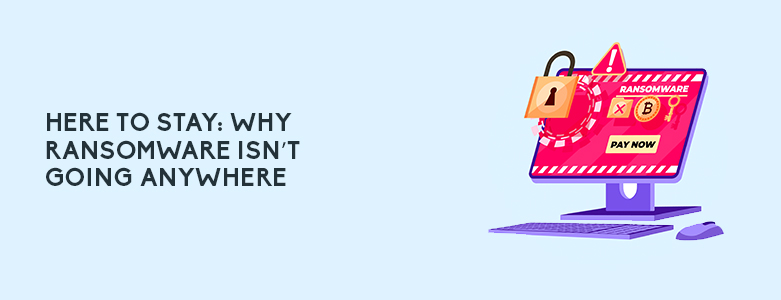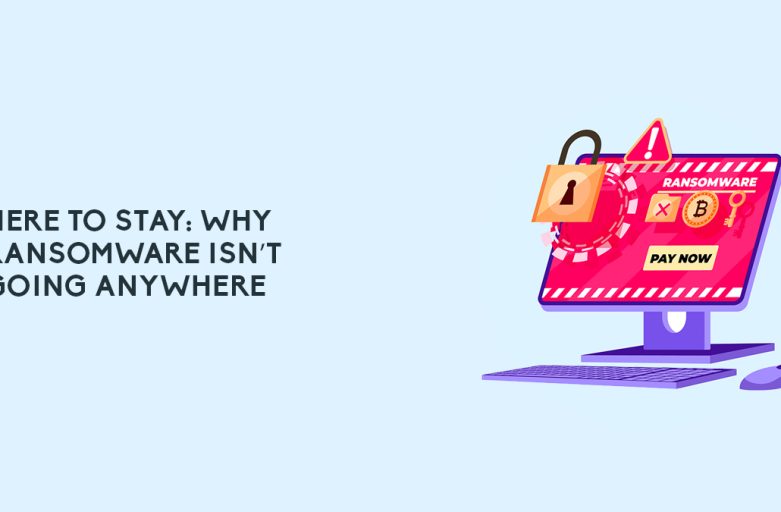
Ransomware in 2023 and years before it have steadily becoming a staple, with high-profile incidents hitting companies of all sizes and across all industries. These attacks involve hackers encrypting a victim’s data and demanding payment in exchange for the decryption key, and they can cause severe financial and reputational damage. Some may wonder if ransomware attacks are a passing fad, but the truth is that they are here to stay. There are many reasons why ransomware attacks are not likely to slow down in the future, but rather ramp up. Below are a few of the reasons why most cyber security experts agree that ransomware is here to stay in the foreseeable future:
Profitable for Attackers: One reason ransomware attacks aren’t going anywhere is that they are incredibly profitable for attackers. With the introduction of cryptocurrencies, it’s become much easier for hackers to receive payments anonymously. Ransomware attacks can yield significant profits for attackers, and as long as there are organizations willing to pay ransoms, there will be hackers willing to carry out these attacks.
Easy to Deploy: Ransomware attacks are relatively easy to deploy, making it easy to attack as many companies as possible. Many hackers use off-the-shelf malware that can be easily modified to carry out a ransomware attack. Additionally, some attackers use phishing emails to deliver the malware, which can be a straightforward and effective way to gain access to a victim’s network.
Increasingly Sophisticated: Ransomware attacks have become increasingly sophisticated in recent years, with attackers using advanced techniques to evade detection and maximize their impact. For example, some attackers use “double extortion” tactics, where they not only encrypt a victim’s data but also threaten to release sensitive information publicly unless the ransom is paid.
Lack of Preparation: Finally, another reason ransomware attacks are unlikely to pass, is that many organizations are still unprepared to deal with them. Many companies lack robust backup and disaster recovery plans, making it more likely that they will pay a ransom to regain access to their data. There are even some organizations that do not prioritize cybersecurity, leaving them vulnerable to attacks.
What You Can Do to Protect Yourself

So now that we know why ransomware is going to be a persistent threat, what can businesses do to reduce the risk of being hit? There are several steps you can take to reduce your risk of falling victim to ransomware in 2023. Below are a few guidelines that businesses can follow to help safeguard their data and minimize the impact of any potential attack:
Backup Your Data: One of the best ways to protect yourself from ransomware attacks is to backup your data regularly. By keeping a copy of your data offsite, you can restore your systems quickly in the event of an attack.
Train Your Employees: Another important step in protecting yourself from ransomware attacks is to train your employees. Make sure they understand the risks of phishing emails and how to identify and report suspicious activity.
Keep Your Systems Updated: Keeping your systems and software up to date is critical in preventing ransomware attacks. Many attackers exploit known vulnerabilities in software to gain access to a victim’s network, so it’s essential to patch any vulnerabilities as soon as possible.
Have a Response Plan: Lastly, it’s crucial to have a response plan in place in the event of a ransomware attack. This plan should include steps for isolating infected systems, restoring backups, and contacting law enforcement.
Ransomware in 2023 or in the future can have devastating effects on businesses. By understanding the types of attacks and taking preventive measures, you can reduce the likelihood of falling victim to a ransomware attack. Having an incident response plan in place can also help mitigate the damage caused by an attack. Remember, prevention is the best defense against ransomware attacks.
To learn more about Ransomware and how to better protect your business from it, contact us at marketing@ctlink.com.ph to consult with us today!

